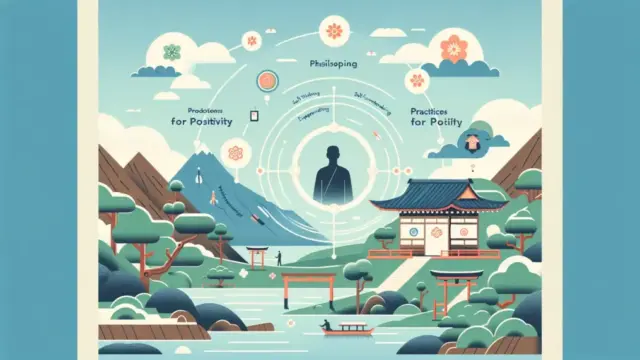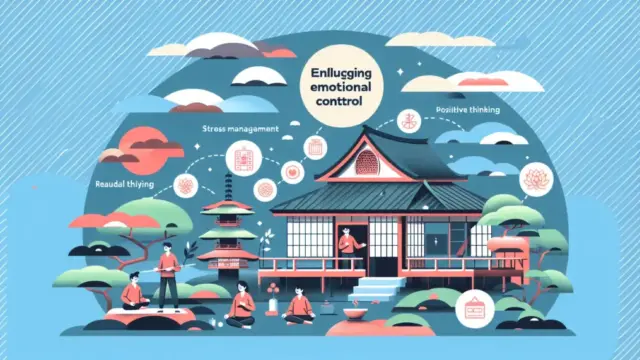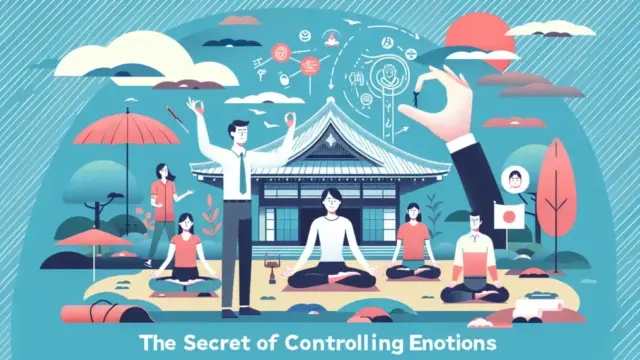Setting goals is the first step towards success, but traditional methods don’t always yield the results we hope for. If you find yourself struggling to achieve your goals, it might be time to embrace a concept known as “reverse thinking.” This approach challenges the conventional mindset around goal achievement and has the potential to yield surprising results.
In this article, we will delve into how to utilize reverse thinking for effective goal setting. Through specific steps and real-life success stories, we aim to provide you with valuable insights that will assist you in reaching your objectives. Let’s explore this innovative way of thinking and discover how to turn your goals into reality more effectively.
So, are you ready to step into a new realm of goal setting together?
- How does reverse thinking differ from traditional methods?
- Key steps and points for effective goal setting
- Learning the impact of reverse thinking through success stories
What Is Reverse Thinking?
Setting goals is a crucial task for many people, but traditional methods often fall short of delivering the desired results. This is where “reverse thinking” comes into play. This approach flips conventional goal-setting on its head, allowing individuals to achieve a greater sense of fulfillment. In this article, we’ll explore how reverse thinking can transform goal setting, highlighting its features and benefits.
Reverse thinking offers a fresh perspective when it comes to setting goals. Instead of simply focusing on what you want to achieve, it encourages you to envision your ideal outcome first and then work backward to identify the necessary steps to get there. This method not only broadens your chances of achieving your goals but also fosters personal growth and new discoveries. Let’s take a closer look at how this differs from traditional goal-setting.
The Difference from Traditional Goal Setting
Traditional goal-setting typically starts with defining specific targets and then crafting a plan to achieve them. In contrast, reverse thinking begins with contemplating the results you aspire to achieve or your ideal state, then calculating backward to outline the actions and processes needed to realize that vision. This approach can help you uncover new pathways to reach your goals.
By adopting reverse thinking, you can shift your perspective on your objectives, allowing for a more flexible and creative approach. Ultimately, this can expand your potential and open up new avenues for success.
- Traditional goal-setting starts with specific targets
- Reverse thinking begins with ideal outcomes and works backward
- New perspectives foster flexibility and creativity
Benefits of Reverse Thinking
Utilizing reverse thinking in goal setting offers a variety of advantages. First, it creates a clearer path to achieving your goals, making it easier to take action. Additionally, considering your goals from a reverse perspective can reveal new ideas and possibilities that you may not have noticed before.
Moreover, reverse thinking can boost your motivation. By clarifying your ideals, you can ignite the passion and drive needed to pursue them, which in turn encourages proactive steps toward achieving your goals.
If you want to deepen your understanding of how reverse thinking impacts goal setting, check out this article: “Setting Self-Development Goals: Practical Examples and Methods for Success”. This piece offers insights into effective goal-setting techniques that can further enhance your personal growth journey.
- A clear path makes it easier to take action
- Discover new ideas and possibilities
- Motivation increases, encouraging proactive behavior
A Fresh Approach to Goal Setting: Thinking Backward
Using a backward-thinking approach to goal setting offers a refreshing take that diverges from traditional methods. In this section, we’ll explore concrete steps for implementing this innovative strategy, as well as key points to consider as you adopt it. Trying out a new method like this could open up exciting possibilities for achieving your goals.
Let’s dive into the specific steps involved in setting goals with a backward-thinking mindset.
Specific Steps
To set goals using backward thinking, the first step is to clarify the ideal outcome you envision. Picture the goal you want to achieve in detail, and imagine what that state looks like. Next, work backwards to identify the necessary actions and processes needed to make that ideal a reality. This reverse engineering process will help clarify the steps you should take, revealing a clear path toward your goal.
In addition, combining short-term and long-term goals can be an effective strategy. This approach allows you to feel a sense of progress in your daily actions as you work toward a larger objective, which can help maintain your motivation.
- Clearly envision your ideal outcome
- Think backwards to identify necessary actions and processes
- Combine short-term and long-term goals
Key Points for Incorporating Backward Thinking
When incorporating backward thinking into your goal-setting process, it’s important to keep a few key points in mind. First, cultivate a flexible mindset to expand your thinking beyond traditional boundaries. Avoid being trapped by fixed ideas, and consider your goals from various angles—this is crucial for success. Additionally, exchanging ideas with others can provide you with valuable new perspectives.
Moreover, don’t be afraid to take action; start with small steps. Embrace the possibility of failure and engage in trial and error to discover the methods that work best for you in achieving your goals.
Self-analysis and motivation management are also vital when setting goals with a backward approach. If you’re interested in this topic, you might find our article on “How to Effectively Set Personal Goals! Steps to Success” particularly helpful. It offers practical steps for achieving your goals, so be sure to check it out.
- Maintain a flexible mindset and avoid fixed ideas
- Gain new perspectives through discussions with others
- Don’t hesitate to start taking small steps
Success Stories Through Reverse Thinking
Reverse thinking has become a crucial strategy for many successful individuals. In this section, we’ll explore real-life examples of those who have adopted this approach and how they achieved their goals. By understanding how reverse thinking has led to tangible results, you can apply these insights to your own goal-setting journey.
We’ll dive into specific cases of successful individuals to see how they implemented reverse thinking in practice. This could provide you with a fresh perspective on reaching your own objectives.
Real-Life Examples of Success
One prominent entrepreneur utilized reverse thinking to great effect. Instead of sticking to traditional business models, he flipped the script on customer needs. Rather than asking, “What do customers want?” he focused on “What do customers actually need?” This shift in perspective allowed him to develop an entirely new service, propelling his business to significant growth.
Another example comes from the world of sports. One athlete consciously transformed his weaknesses into strengths to achieve his goals. Instead of concentrating on “overcoming weaknesses,” he focused on “leveraging those weaknesses to create my own style.” This approach enabled him to cultivate a unique strategy that set him apart from other competitors.
- An entrepreneur who rethought customer needs
- An athlete who turned weaknesses into strengths
- The potential of reverse thinking to generate new outcomes
The Results of Reverse Thinking
By incorporating reverse thinking, many successful individuals have achieved remarkable outcomes. Their ability to think freely, without being confined to conventional frameworks, has helped them stand out in competitive markets. Additionally, reverse thinking encourages the emergence of new ideas and solutions, leading to results that often exceed expectations.
Moreover, reverse thinking positively impacts leadership as well. When leaders adopt flexible thinking, it opens their teams up to new challenges, fostering a creative environment. In this way, reverse thinking brings about positive changes not only for individuals but also for entire organizations.
- Free thinking for generating new outcomes
- Differentiation in competitive markets
- Leadership that positively influences the entire team
Embracing Reverse Thinking in Everyday Life
Reverse thinking isn’t just a strategy for special situations; it can be integrated into our daily lives as well. In this section, we’ll explore how to apply reverse thinking in everyday scenarios with practical examples. We’ll also share tips to help you maintain this mindset, ultimately benefiting your goal-setting and daily routines.
Incorporating reverse thinking into your daily life can enhance your flexibility and creativity, leading to a more fulfilling everyday experience. Let’s dive into some specific applications.
Practical Applications in Daily Life
Reverse thinking can be beneficial in various everyday situations. For instance, when it comes to problem-solving at work, if traditional methods aren’t yielding results, trying an opposite approach can be surprisingly effective. Instead of focusing solely on customer needs, consider offering innovative suggestions that customers might not even think of themselves. This can lead to unexpected positive feedback.
You can also apply reverse thinking to your daily life. For example, when looking to streamline chores, find ways to turn tedious tasks into enjoyable activities. You might listen to music while cleaning or compete with friends while cooking. Making these tasks fun can significantly lighten the load of your daily responsibilities.
- Try an opposite approach to solve work-related problems
- Propose innovative ideas that customers wouldn’t expect
- Discover ways to make housework enjoyable
Tips for Sustaining Reverse Thinking
To keep reverse thinking alive in your daily routine, consider these helpful tips. First, dedicate a little time each day to reflect on your goals and aspirations. Use this time to think about your path from a different perspective, which can lead to new insights.
Additionally, having companions who practice reverse thinking can be beneficial. Sharing ideas with friends or colleagues can broaden your perspectives and create an environment that fosters this innovative mindset. Moreover, maintaining an attitude of continuous challenge without fearing failure is essential for sustaining reverse thinking.
Integrating reverse thinking into your daily life is a fantastic way to boost flexibility and creativity. If you’re interested in deepening your knowledge about effective goal setting, we recommend checking out this article: “A Guide to Visualizing Goal Achievement.” This guide provides detailed techniques for achieving your goals and visualizing them effectively, so be sure to take a look.
- Set aside time each day to reflect on your goals
- Share ideas with companions
- Maintain a fearless attitude towards challenges
Conclusion
In this article, we explored a fresh approach to goal-setting called reverse thinking. This method stands apart from traditional strategies by encouraging you to work backward from your ideal outcome, which can significantly enhance your ability to achieve your goals. Through various success stories and practical applications, you’ve likely gained a better understanding of the benefits of reverse thinking.
We also shared tips on how to maintain this mindset over time. By incorporating daily reflections and sharing ideas with peers, you can seamlessly integrate reverse thinking into your everyday life, leading to more fulfilling goal-setting experiences. We encourage you to put these strategies into practice and carve out a new path toward achieving your personal goals.
- Utilizing reverse thinking broadens the possibilities for achieving your goals.
- It’s essential to think backward from your ideal outcome when determining your actions.
- Take advantage of tips for incorporating reverse thinking into your daily life.
Embrace this approach and take steps toward a brighter future. We’d love to hear your thoughts and experiences regarding your goals, so feel free to share in the comments!




















































Comment